The Dólmenes de Coromínas complex of five megalithic tombs was situated on a low mound on a limestone spur above the Arroyo de Enmedio, about 1 kilometre north west of the town of Estepona
By Nick Nutter | Updated 4 Jun 2023 | Málaga | Places To Go |
Login to add to YOUR Favourites or Read Later
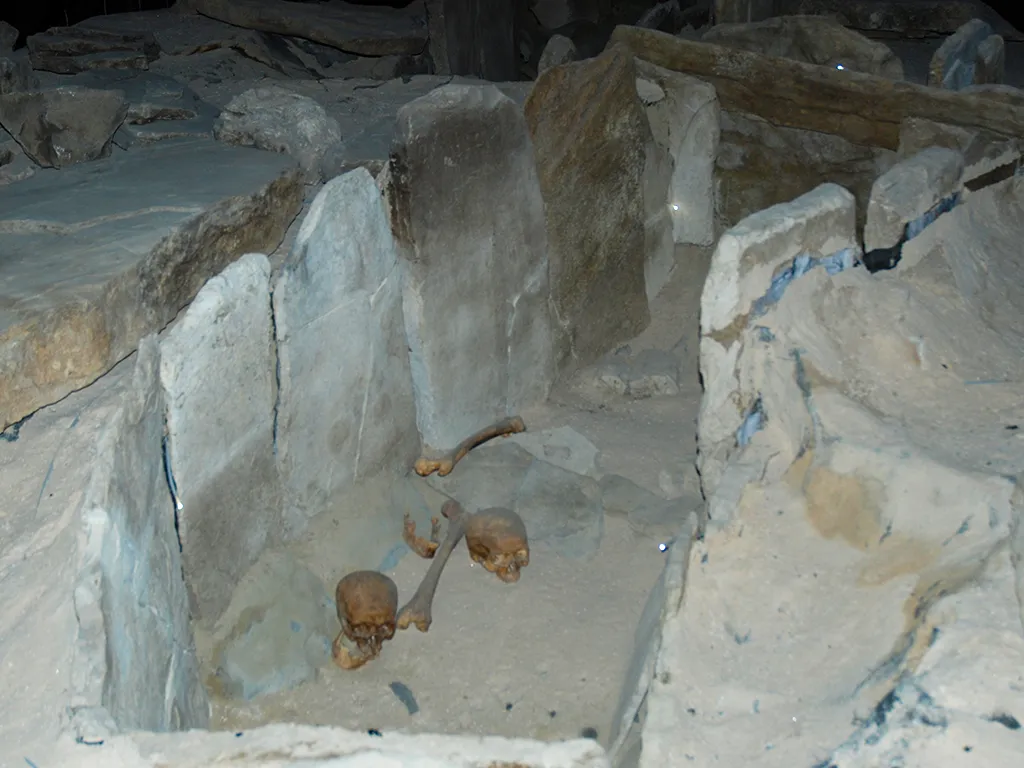
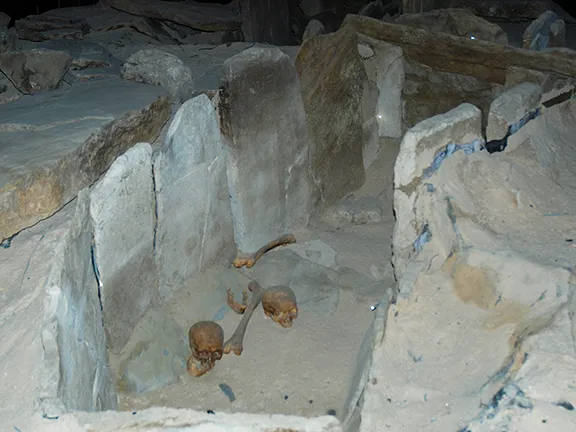
Passage grave Dólmenes de Coromínas
In 2001, surveyors preparing the ground for the new A7 road bypassing Estepona discovered a flint working area. They did not then realize that their discovery was to change the known pre history of the area. Until the discovery of the Dólmenes de Coromínas there had been very little evidence of any Neolithic activity on the entire littoral of Malaga province. This gap in the human history of this part of Andalucia covered the period from about 5000 BC until the arrival of the Phoenicians, 4000 years later.
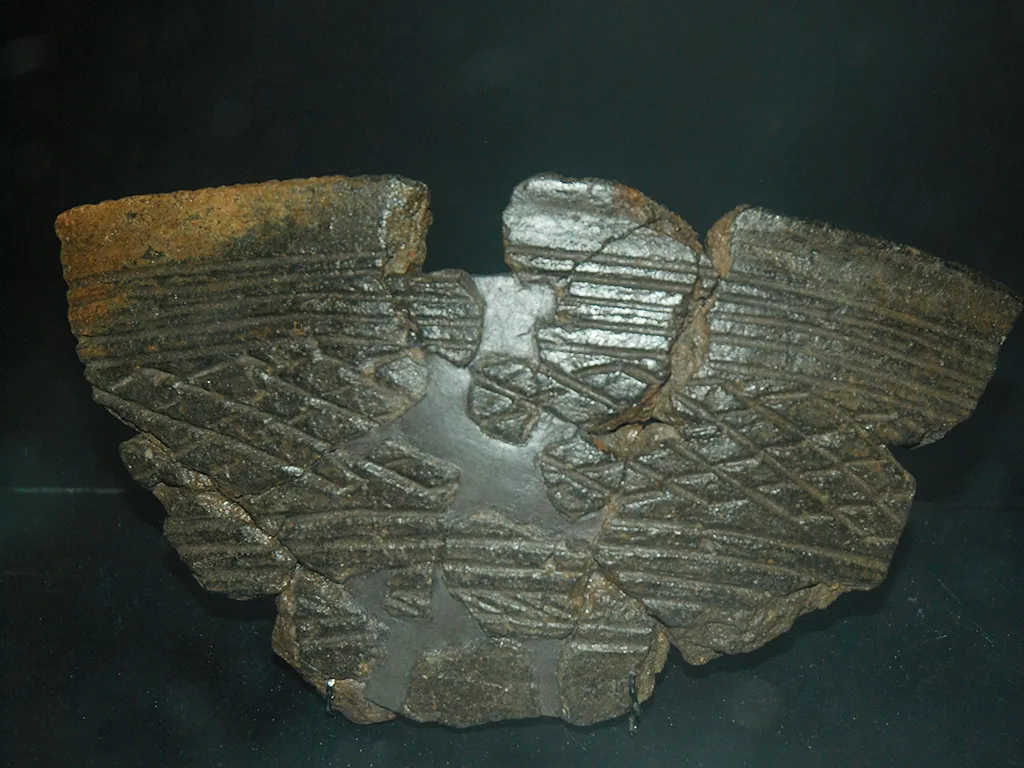
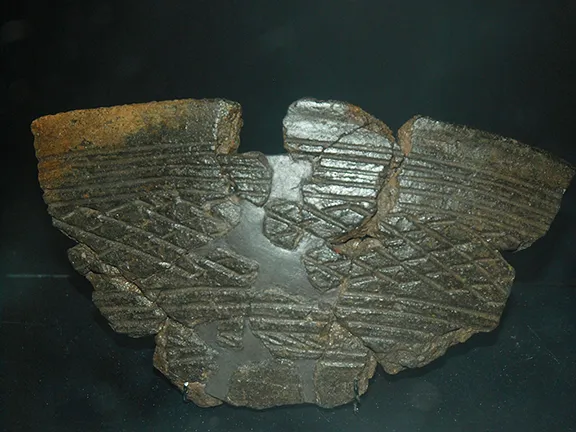
Beaker bowl with imprinted cordware decorations Dólmenes de Coromínas
The Dólmenes de Coromínas complex of five megalithic tombs was situated on a low mound on a limestone spur above the Arroyo de Enmedio, about 1 kilometre north west of the town of Estepona. Nearby there are signs of a flint working area. The site proved to have immense archaeological value and the decision was made to transport the tombs to the nearby Los Pedregales park where they were recreated exactly as they had been found. The tombs were then covered with a large dome, representing a huge dolmen, and surrounded by displays of the finds made within the tombs. A remarkable feature of the interpretation centre is the astrodome in the higher reaches of the covering dome that shows the constellations as they would have appeared about 5000 years ago when the dolmens were first constructed.
Los Pedregales was an apt place to position the dolmens because the park preserves the vegetation that would have been normal during the Neolithic period, pine trees, holm oaks, maquis, mastic and junipers. The Neolithic people in the area were exploiting the river and stream terraces that would have provided decent ground for growing crops, mainly the Padrón, Manilva and Guadiaro, and the important streams, such as those of the Enmedio, Vaquero, del Beneficiado and the Jordana. They supplemented their vegetarian diet with shellfish and fish from the nearby coast and a certain amount of hunting. The style of their life indicated that they had not entirely converted to an agrarian society.
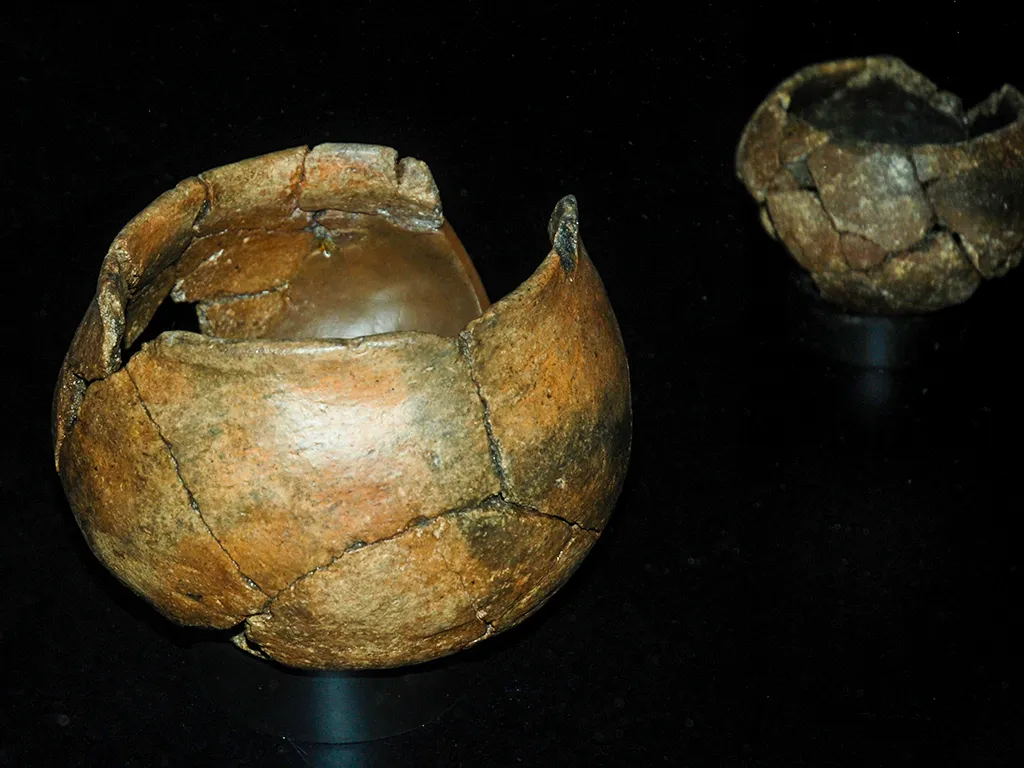
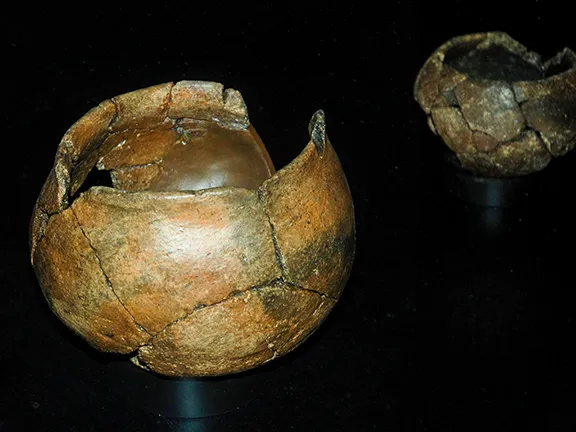
Beaker bowl Dólmenes de Coromínas
The whole site was in use as a necropolis from the middle Neolithic, early Copper Age, about 3000 BC until as late as 400 BC. Corominas should not be looked upon in isolation. Other archaeological sites in the area, such as the cave sites Pecho Redondo, Nagüeles and Gran Duque, the settlement sites at Arroyo Vaquero, Lomo de la Alberica and other areas of Arroyo Enmedio, Loma del Cortijo Quemado and the pit site at Lomo de la Alberica were in use at the same time as Corominas. Over a long period of time, from the early Neolithic until the Roman period, the people utilised the natural resources of the area including flint and copper minerals from the upper reaches of the Rio Quadalmansa, the food sources on and near the coast and the fertile valleys of the rivers and streams. Without doubt the area was more populated and showed more activity than realized until the early years of the 21st century.
Research papers on Corominas submitted to date are speculative. Many analysis results relating to the age of the deposits, including the human remains and any aDNA from bones to give an idea of the genealogy of the interred humans are eagerly awaited.
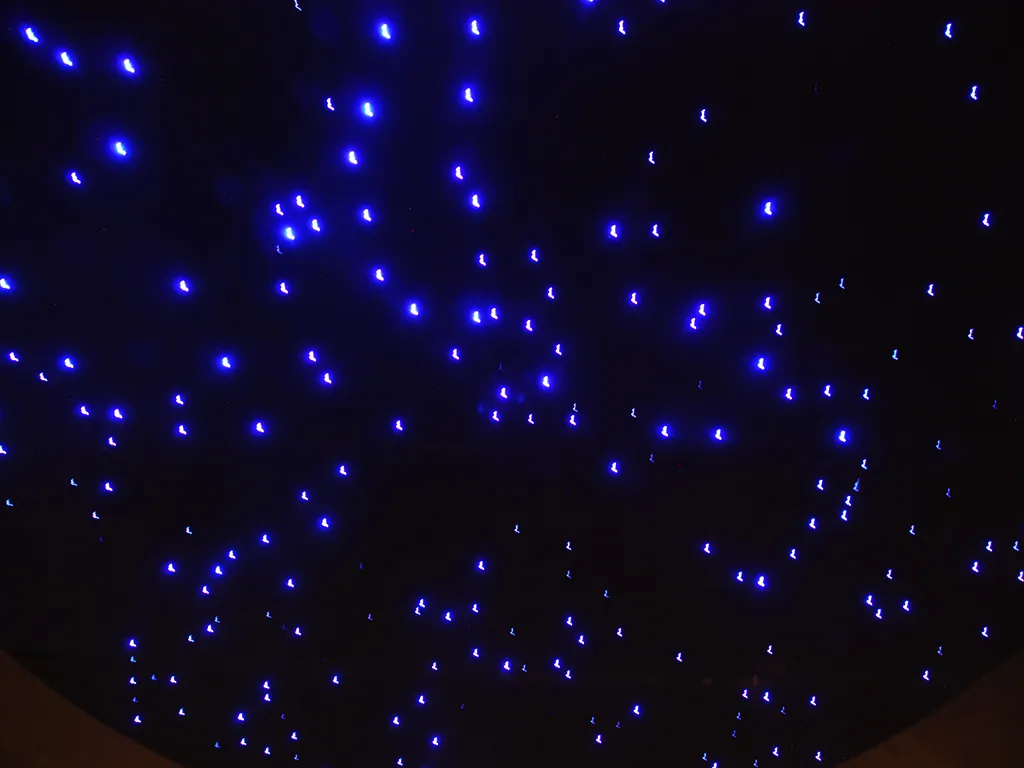
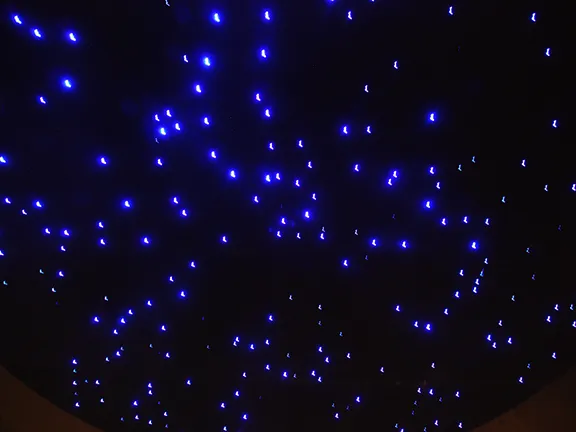
Constellations about 3000 BC Dólmenes de Coromínas
The first grave utilised an existing fracture in the bedrock. The sides were lined with vertical stones called orthostats to create a short corridor and an end chamber that was entered through two orthostats projecting out into the corridor to form an open door. The slabs that would have formed the roof over the orthostats have disappeared, probably removed for other purposes. In style it is very similar to that of Tesorillo de La “Llaná”, in Alozaina, also in Malaga province.
The human remains within the chamber indicated that they were all placed there as secondary inhumations. The bodies would have been buried elsewhere for a number of months then re-interred. By that time the flesh and softer tissues would have decomposed leaving only the bones. The skulls were placed with the long bones around the perimeter of the chamber with the small bones in the centre. The remains were accompanied by fifty limestone disc beads.
The floor of the tomb was made from limestone slabs. When these were removed a layer was found containing blackish organic sediments, chipped and fractured bone remains and a number of geometric microliths, small, manufactured flint or chert blades. Further study may show that the corridor tomb was erected on top of an existing depository.
At the entrance to the tomb there was a flared atrium. Here the archaeologists found ‘votive’ axes made from locally sourced diabase and sillimanite rocks. It is conjectured that the chamber was looted long after it was sealed and the axes were part of the original grave goods.
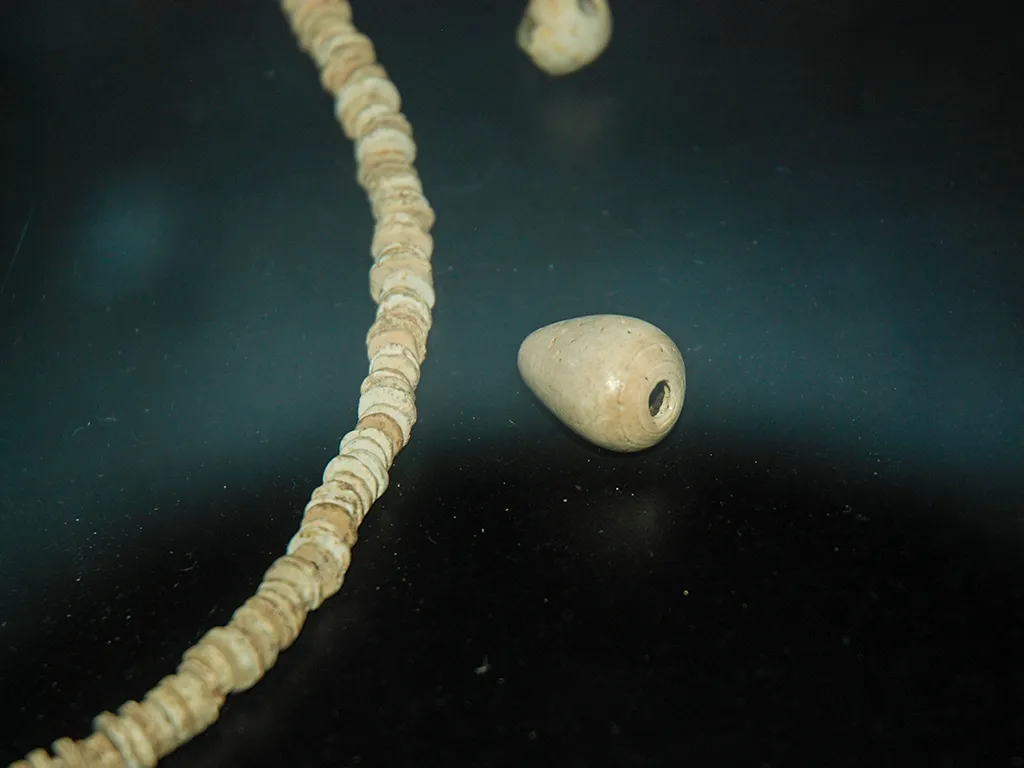
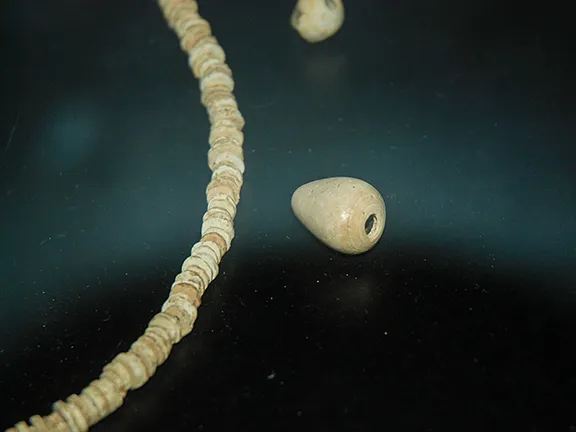
Shell necklace Dólmenes de Coromínas
Just to the north of Grave 1, Grave 2 is a gallery tomb with no defined burial chamber. The orthostats and two remaining capstones are limestone and considerably thinner and weaker than those found in Grave 1. As a result, the grave partially collapsed in pre-historic times and the grave was deformed. Inside the grave, concentrated towards the end of the chamber opposite the rock slab covering the entrance, were the remains of four or five bodies including one that had been placed in a foetal position. Grave goods included very fragmented pottery of the Bell Beaker or Campaniform style, seashell beads and flint artefacts including a flint core. The design of the flint blades and arrowheads and that of the pottery indicated this grave was in use during the early part of the Chalcolithic period which, in this geographical area would have been around 2800 BC.
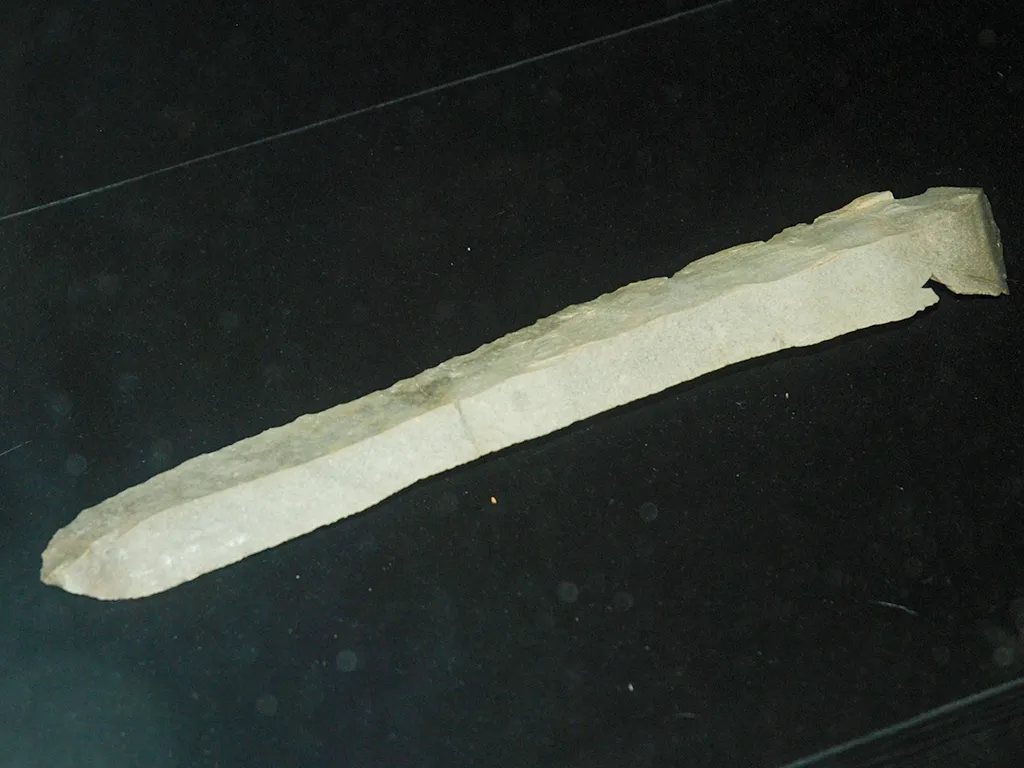
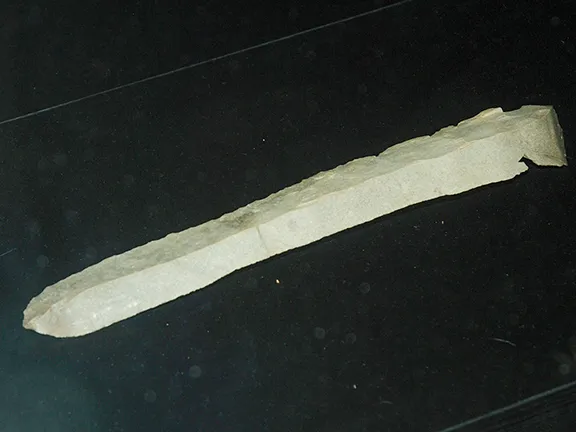
Flint blade Dólmenes de Coromínas
Of similar age to Grave 2, Grave 3 is a passage grave that would have been covered by a tumuli of earth and stone, retained by a circle of limestone blocks. The grave was divided into three segments by the inclusion of two sets of orthostats protruding into the corridor, one near the entrance, the other towards the head of the corridor. The gallery contained the remains of at least six individuals with the skulls and long bones of four of the individuals preserved in the burial chamber. This tomb had also been plundered; the looters having discarded artefacts of no value to them just outside the tomb. The remaining artefacts included two pots and two small bowls that were almost intact plus a large flint blade, approximately 20 cms long.
Grave 4 is similar in construction to Grave 3. Unfortunately, it was not in as good a state of preservation. Excavations in the burial chamber revealed a long period of repeated use. Artefacts included an intact small plate or large bowl. There were also a number of polished axes and adzes, manufactured from locally sourced fine-grained ophites and diabases. The remains of one adult male were accompanied by a Bell Beaker style vase decorated with zigzag and parallel lines along with a gold spiral ornament, and several copper adzes. There were also the remains of an, as yet, unknown number of humans along with flint tools, axes and adzes.
Grave 5 was discovered between Graves 2 and 3, partially covered by the tumuli over Grave 3, indicating that it is somewhat older. It is a slightly trapezoidal gallery grave with the narrow end at the entrance. Many of the rock slabs had collapsed into the corridor. Even so, it was apparent that the grave had been used for multiple inhumations.
Visits to the Dólmenes de Coromínas are by appointment. For details click here.